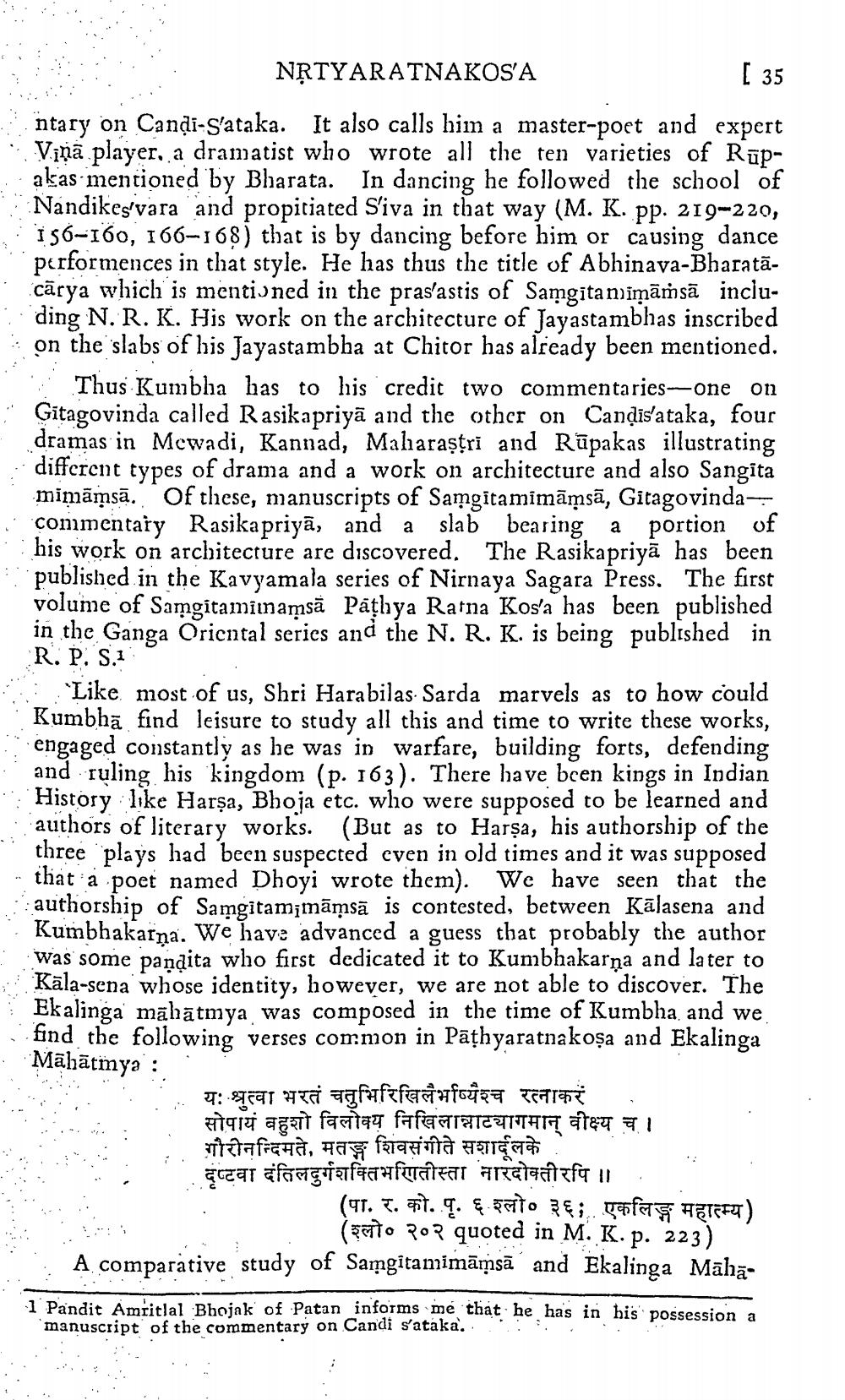________________
NRTYARATNAKOS'A
[ 35 ntary on Canại-S'ataka. It also calls him a master-poet and expert ..Viņā player, a dramatist who wrote all the ten varieties of Rūp
akas mentioned by Bharata. In dancing he followed the school of
Nandikes'vara and propitiated S'iva in that way (M. K. pp. 219-220, : 156-160, 166-168) that is by dancing before him or causing dance performences in that style. He has thus the title of Abhinava-Bharatācārya which is mentioned in the pras'astis of Samgitanjimāṁsā including N. R. K. His work on the architecture of Jayastambhas inscribed on the slabs of his Jayastambha at Chitor has already been mentioned.
. Thus Kumbha has to his credit two commentaries--one on Gitagovinda called Rasikapriyā and the other on Canļīs'ataka, four dramas in Mewadi, Kannad, Maharaştri and Rūpakas illustrating different types of drama and a work on architecture and also Sangita miņāmsā. Of these, manuscripts of Samgitamimāmsā, Gitagovinda
commentary Rasikapriyā, and a slab bearing a portion of : his work on architecture are discovered. The Rasikapriyā has been
published in the Kavyamala series of Nirnaya Sagara Press. The first volume of Samgitamiinamsā Pāțhya Ratna Kos'a has been published in the Ganga Oriental series and the N. R. K. is being published in R. P. S.
Like most of us, Shri Harabilas Sarda marvels as to how could Kumbhā find leisure to study all this and time to write these works, engaged constantly as he was in warfare, building forts, defending
and ruling his kingdom (p. 163). There have been kings in Indian - History like Harşa, Bhoja etc. who were supposed to be learned and
authors of literary works. (But as to Harsa, his authorship of the
three plays had been suspected even in old times and it was supposed - that a poet named Dhoyi wrote them). We have seen that the
authorship of Samgitamimāmsā is contested, between Kālasena and Kumbhakaina. We have advanced a guess that probably the author was some panaita who first dedicated it to Kumbhakarņa and later to Kāla-sena whose identity, however, we are not able to discover. The Ekalinga māhātmya was composed in the time of Kumbha and we find the following verses common in Pāțhyaratnakoșa and Ekalinga Māhātmya :
यः श्रुत्वा भरतं चतुभिरिखिलैर्भाष्यैश्च रत्नाकर । सोपायं बहुशो विलोक्य निखिलान्नाटयागमान् वीक्ष्य च । गौरीनन्दिमते, मतङ्ग शिवसंगीते सशार्दूलके दृष्टवा दंतिलदुर्गशक्तिभरिणतीस्ता नारदोक्तीरपि ॥
(91. . ... e cetto Rei, gafar EIFFT)
(a to po? quoted in M. K. p. 223) A comparative study of Samgitanimāmsā and Ekalinga Māhā
1 Pandit Amritlal Bhojak' of Patan informs me that he has in his possession a manuscript of the commentary on Candi s'ataka. :




